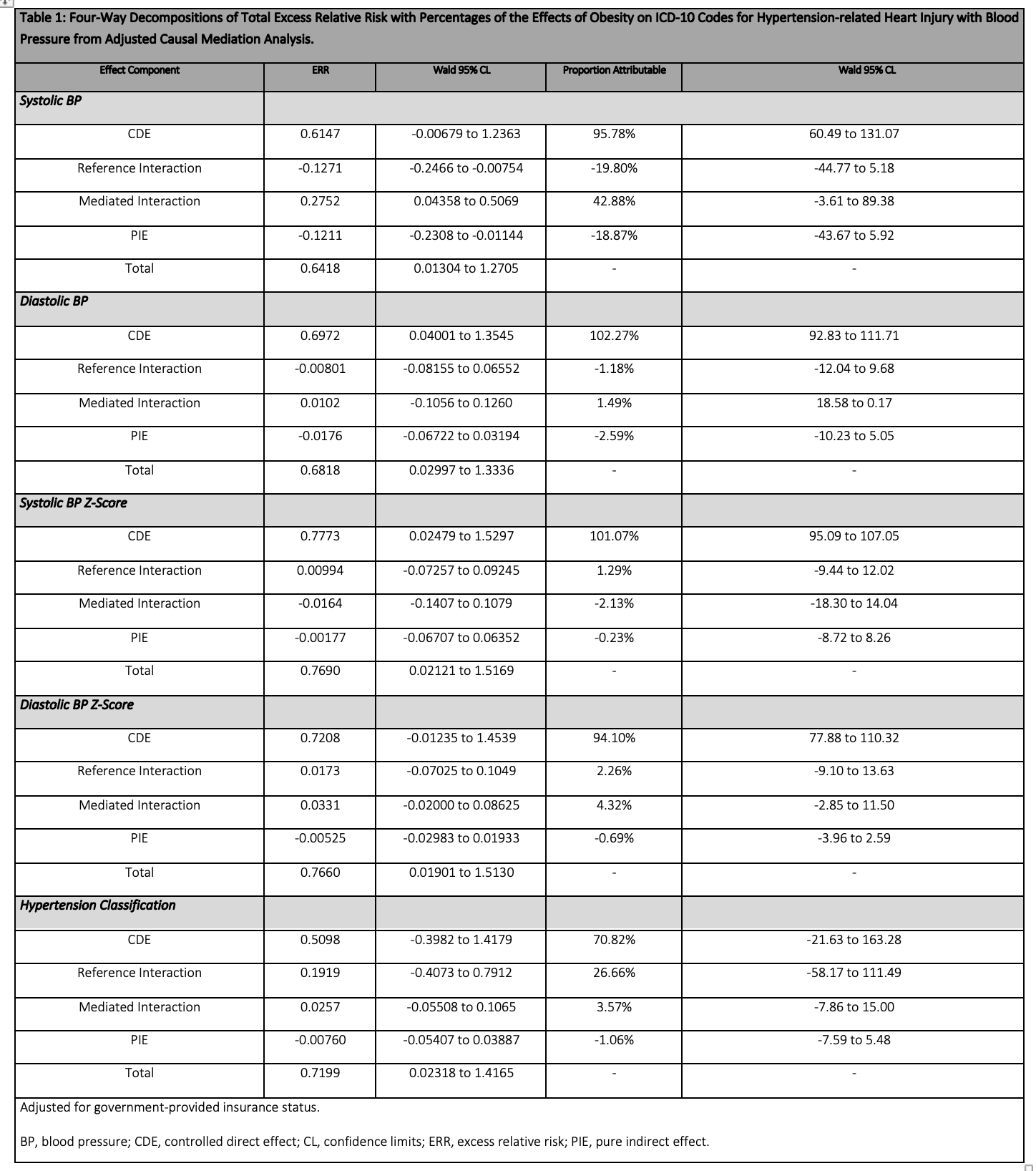Nephrology: Clinical
Nephrology 2: CAKUT/Genetic Clinical and Basic Science
263 - Direct Effect of Obesity on Target Organ Injury and Indirect Effect Mediated through Blood Pressure at Baseline
Publication Number: 263.251
.jpeg.jpg)
Asmaa Semrin, MD, MS (she/her/hers)
Pediatric Resident PGY2
Medical College of Georgia, Augusta University
Evans, Georgia, United States
Presenting Author(s)
Background: Hypertension (HTN) disorders in youth can lead to target organ injury (TOI), which can start as early as the index visit. Heart-specific TOI such as left ventricular hypertrophy, the main marker of TOI, is common in youth with HTN and is a major prognostic factor for cardiovascular morbidity and mortality in adults. However, obesity may also contribute to TOI, but the effects on TOI due to obesity vs. the effects due to blood pressure (BP) have not been delineated.
Objective:
Our objective was to estimate the direct effect of obesity on TOI and the indirect effect mediated through BP severity in youth with HTN disorders.
Design/Methods:
This is an analysis of baseline data from a multisite retrospective cohort of youth referred for HTN disorders to subspecialists who are enrolled in the Study of the Epidemiology of Pediatric Hypertension (SUPERHERO) Registry. Inclusion criteria include participants aged 0-18 who were referred for their initial visit to a subspecialty clinic for HTN disorders. Exclusion criteria include participants with a history of active pregnancy, kidney transplantation, or kidney failure on dialysis. Data were collected via electronic health record queries. We defined our exposures as body mass index (BMI), BMI z-score, and obesity (BMI ≥95th %ile for age and sex). We defined our mediators as BP, BP z-score, and HTN (per age, sex, and height-based U.S. guidelines). We defined our outcome as ICD-10 codes for HTN-related TOI in the heart. We used multivariable logistic regression models and causal mediation analysis with a directed acyclic graph-informed adjustment set containing insurance status.
Results:
Of the 5328 youth, 45% had obesity, median age was 13.8 years (IQR 9.4, 16.2), 34.8% were female, and the majority were non-Hispanic (81.2%). Obesity was associated with greater odds of TOI (OR 1.57, 95% CI 1.07, 2.28). Causal mediation analysis revealed that 95.8% (95% CI 60.5, 131.1) of the total effect of adiposity on TOI was directly due to adiposity. There was minimal evidence of appreciable mediation or interaction through BP severity (Table 1).
Conclusion(s): Youth with obesity who were referred for HTN disorders to subspecialty clinics had greater odds of having heart-specific TOI at their index visit. Adiposity was responsible for the vast majority of the total effect on TOI in the heart compared to BP severity. Our results provide more evidence for the importance of primordial prevention strategies aimed at preventing and treating obesity in youth, which may have a greater effect on reducing future cardiovascular morbidity and mortality compared to blood pressure control.
